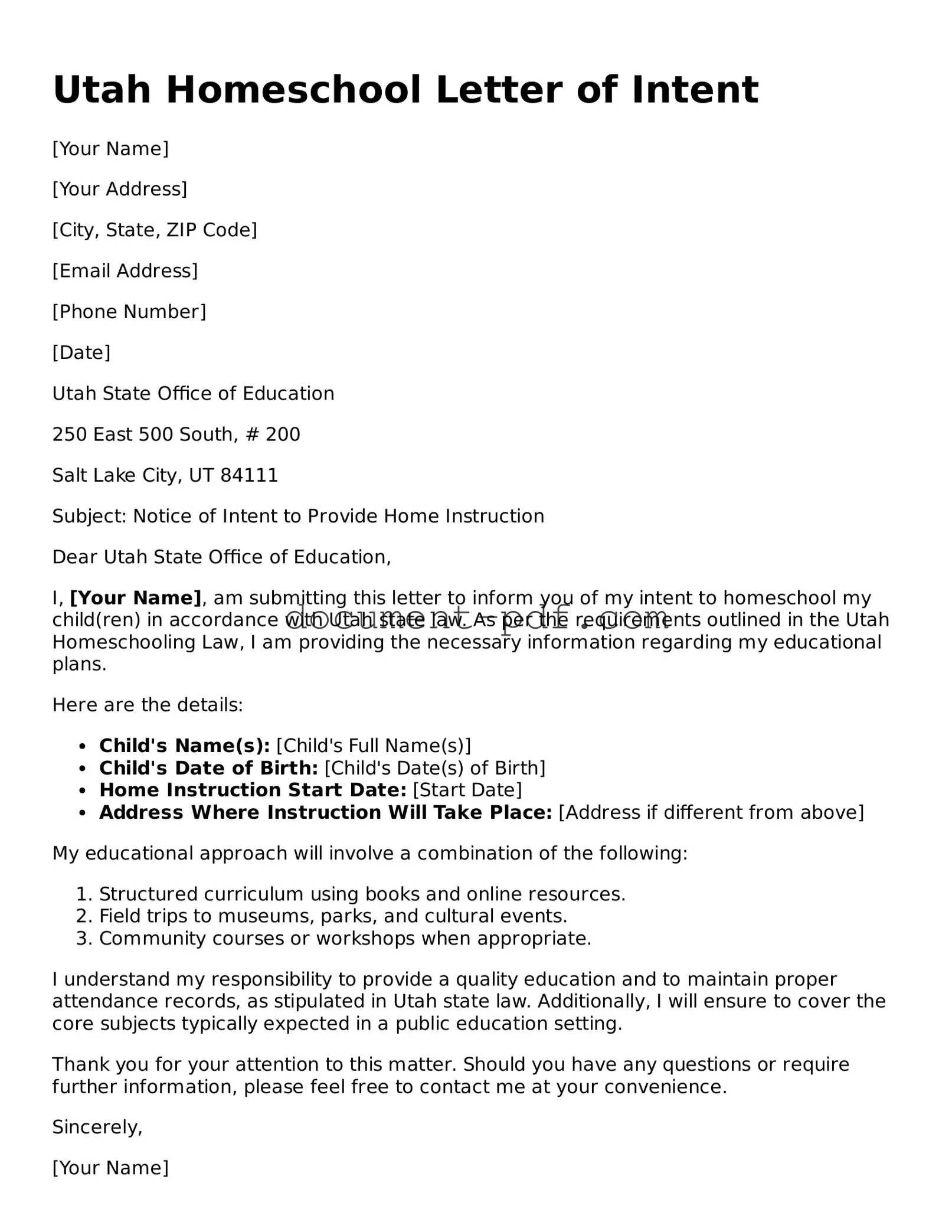Utah Homeschool Letter of Intent
[Your Name]
[Your Address]
[City, State, ZIP Code]
[Email Address]
[Phone Number]
[Date]
Utah State Office of Education
250 East 500 South, # 200
Salt Lake City, UT 84111
Subject: Notice of Intent to Provide Home Instruction
Dear Utah State Office of Education,
I, [Your Name], am submitting this letter to inform you of my intent to homeschool my child(ren) in accordance with Utah state law. As per the requirements outlined in the Utah Homeschooling Law, I am providing the necessary information regarding my educational plans.
Here are the details:
- Child's Name(s): [Child's Full Name(s)]
- Child's Date of Birth: [Child's Date(s) of Birth]
- Home Instruction Start Date: [Start Date]
- Address Where Instruction Will Take Place: [Address if different from above]
My educational approach will involve a combination of the following:
- Structured curriculum using books and online resources.
- Field trips to museums, parks, and cultural events.
- Community courses or workshops when appropriate.
I understand my responsibility to provide a quality education and to maintain proper attendance records, as stipulated in Utah state law. Additionally, I will ensure to cover the core subjects typically expected in a public education setting.
Thank you for your attention to this matter. Should you have any questions or require further information, please feel free to contact me at your convenience.
Sincerely,
[Your Name]
